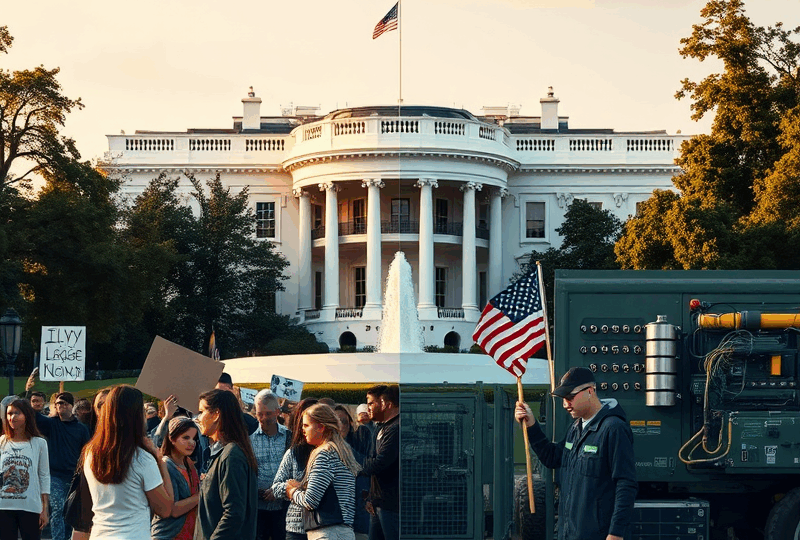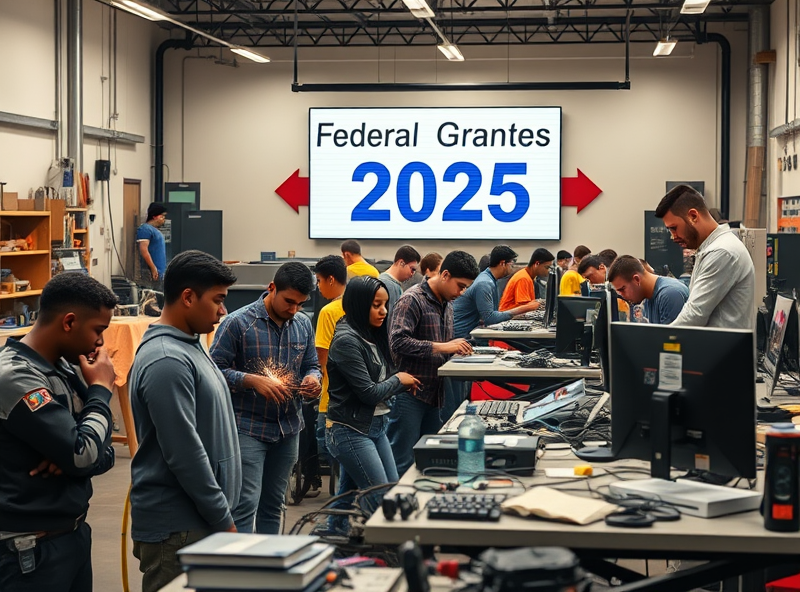
Latest U.S. Government Grants Update 2025

Major Changes in U.S. Government Grant Allocation: What 2025 Means for Your Financial Future
Hello, fellow Americans! As we navigate through 2025, there are some significant shifts happening in how our government allocates federal grants that could directly impact your financial planning and investment strategies. Let’s break down these changes and explore what they mean for your wallet and future opportunities.
The Great Education Funding Shift: From Ivy League to Trade Schools
One of the most notable developments this year has been the federal government’s decision to redirect substantial education grants from elite universities to trade schools and vocational programs. This isn’t just policy news—it’s a financial game-changer for families across America.
Why This Matters for Your Financial Planning
If you’re a parent saving for your child’s education or a young adult considering your career path, this shift could significantly impact your financial strategy. Here’s what the numbers tell us:
Traditional College Path:
- Average four-year degree cost: $35,000-$70,000+
- Time to degree: 4+ years
- Job market uncertainty in many fields
- Student loan debt averaging $37,000 nationally
Trade School Alternative:
- Average program cost: $3,000-$18,000
- Time to completion: 6 months to 2 years
- High demand in skilled trades
- Often higher starting salaries than many bachelor’s degree fields
Investment Opportunities in the Skilled Trades Sector
Savvy investors should pay attention to publicly traded companies in the skilled trades education space. As federal funding flows toward these institutions, we’re likely to see:
- Increased enrollment in vocational programs
- Higher demand for trade school services
- Potential growth in companies that provide vocational training equipment and materials
- Real estate opportunities near expanding trade school campuses
Global Aid Cuts: Understanding the Economic Implications
The substantial reductions in U.S. global aid programs represent more than just foreign policy shifts—they reflect broader economic priorities that could influence market sectors.
Domestic Market Implications
When government spending shifts from international aid to domestic programs, several market sectors typically benefit:
Winners:
- Domestic manufacturing companies
- Infrastructure contractors
- Clean energy firms
- Workforce development companies
Considerations:
- International development stocks may face headwinds
- Defense contractors focused on foreign aid programs might see reduced revenues
- Domestic service providers may see increased opportunities
Currency and Trade Impact
Reduced foreign aid often correlates with:
- Stronger focus on domestic currency stability
- Potential shifts in international trade relationships
- Changes in emerging market dynamics that could affect global investment portfolios
The Domestic Investment Boom: Your Guide to Opportunity
The 2025 focus on domestic investment presents numerous opportunities for individual investors and small business owners.
Key Sectors to Watch
Clean Energy and Green Technology The government’s emphasis on domestic clean energy creates potential opportunities in:
- Solar panel manufacturing companies
- Wind energy infrastructure
- Battery technology firms
- Energy storage solutions
- Electric vehicle charging networks
Advanced Manufacturing With the push to reduce foreign production dependence, consider:
- Domestic manufacturing ETFs
- Small-cap industrial companies
- Automation and robotics firms
- Supply chain management companies
Workforce Development The focus on skills training opens doors in:
- Educational technology companies
- Online learning platforms
- Professional certification providers
- Corporate training services
Small Business and Entrepreneurship Opportunities
If you’re considering starting a business or expanding an existing one, the current grant environment favors:
- Community-focused enterprises
- Green technology startups
- Manufacturing businesses that can compete with foreign production
- Vocational training services
- Infrastructure support services
Practical Steps for Your Financial Strategy
For Investors
- Diversify into domestic-focused funds that align with government priorities
- Research infrastructure ETFs that could benefit from increased domestic spending
- Consider small-cap value funds focused on American companies
- Evaluate clean energy investments that might benefit from federal support
For Families and Students
- Reassess education savings strategies – 529 plans might be more effective for trade school programs
- Explore federal grant opportunities for vocational training through official channels
- Consider the ROI of different educational paths when making financial decisions
- Look into apprenticeship programs that offer paid training
For Small Business Owners
- Research federal grant opportunities at Grants.gov
- Partner with local economic development agencies for funding guidance
- Align business plans with domestic investment priorities
- Consider workforce development partnerships with local trade schools
Looking Ahead: Long-term Financial Implications
These policy shifts represent a fundamental change in how America invests in its future. For your personal financial planning, this means:
- Greater emphasis on domestic markets in investment portfolios
- New opportunities in traditionally undervalued sectors like skilled trades
- Potential for reduced education costs through federal support for vocational training
- Increased focus on practical skills that translate directly to earning potential
Staying Informed and Taking Action
To make the most of these opportunities, it’s essential to stay informed through official channels. Remember to:
- Regularly check Grants.gov for new opportunities
- Monitor Department of Energy and Commerce announcements for sector-specific developments
- Consult with financial advisors who understand these policy shifts
- Consider how these changes align with your long-term financial goals
Conclusion
The 2025 shifts in federal grant allocation represent more than policy changes—they’re creating new pathways to financial success for American families, students, and investors. Whether you’re planning for education expenses, looking for investment opportunities, or considering a career change, understanding these trends can help you make more informed financial decisions.
Remember, successful financial planning isn’t just about following market trends—it’s about understanding how broader economic policies create opportunities and challenges. These government funding shifts offer a unique window into where American priorities are heading, and positioning yourself accordingly could benefit your financial future.
What are your thoughts on these funding shifts? Have you considered how they might impact your financial planning? We’d love to hear from you in the comments below!
Disclaimer: This article is for informational purposes only and should not be considered as financial advice. Always consult with qualified financial professionals before making investment decisions.







